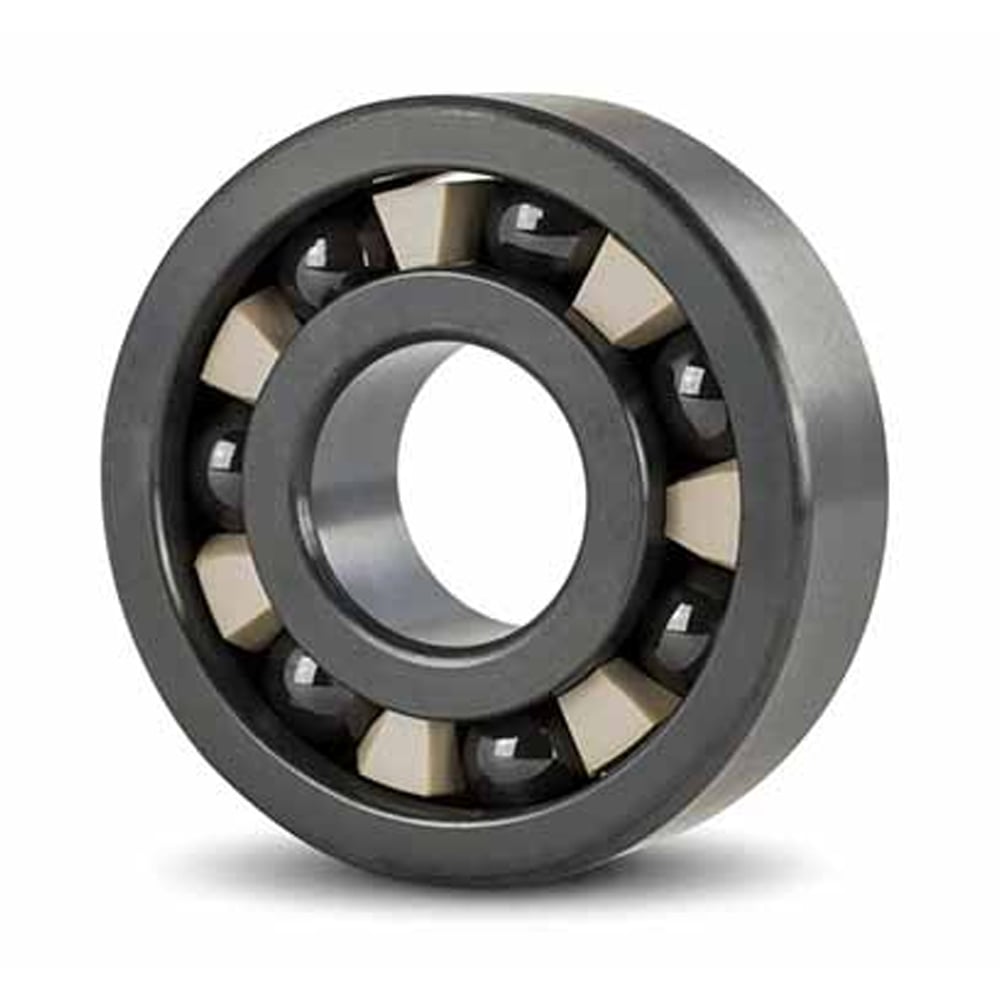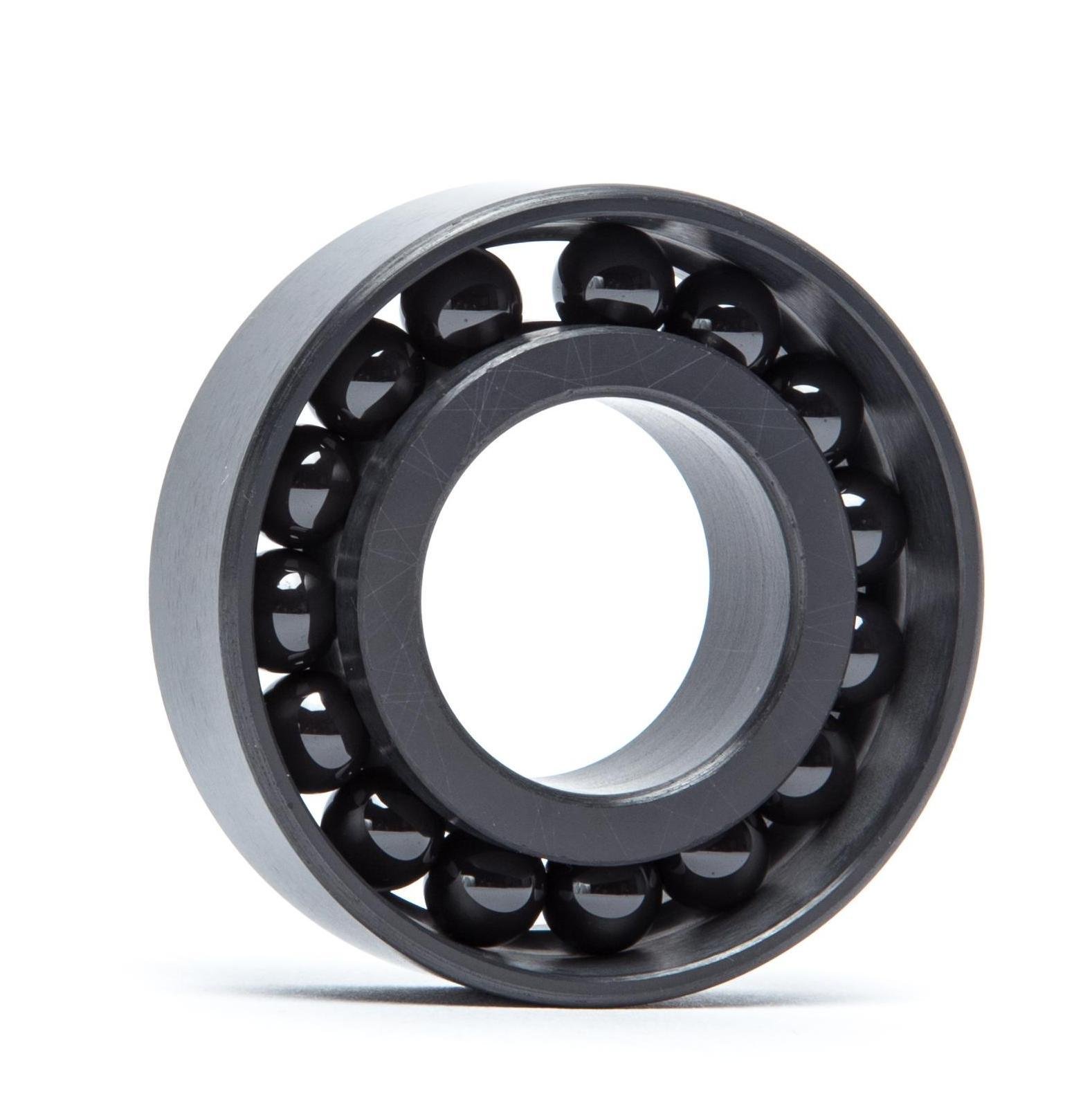Comprehensive Guide to Si3N4 Ceramic Bearings
Silicon Nitride (Si3N4) ceramic bearings are rapidly transforming various industries with their unique combination of strength, lightweight properties, and environmental resistance. This comprehensive guide delves into the specifics of Si3N4 ceramic bearings, exploring their advantages, applications, and key considerations for use.

Key Advantages of Si3N4 Ceramic Bearings
- Lightweight Nature: Si3N4 ceramic bearings are about 40% lighter than steel bearings. This significant reduction in weight translates into lower inertia and less energy required for acceleration and deceleration of machinery, leading to improved efficiency in high-speed applications.
- Exceptional Hardness and Wear Resistance: Silicon Nitride is renowned for its extreme hardness, surpassing most metals. This hardness contributes to superior wear resistance, resulting in a longer lifespan of the bearings even under harsh operating conditions.
- Low Friction Coefficient: The smooth surface finish of Si3N4 ceramic bearings, combined with their material composition, results in a very low coefficient of friction. This low friction minimizes heat generation and energy loss, enhancing the overall efficiency of the equipment.
- High-Temperature Capability: Si3N4 ceramic bearings retain their mechanical properties at elevated temperatures where traditional materials might degrade. This makes them suitable for applications involving high operational temperatures, extending their usability in environments unsuitable for metal bearings.
- Corrosion and Chemical Resistance: Silicon Nitride is inherently resistant to a wide array of corrosive substances, including water, saltwater, and many acids and alkalis. This resistance ensures their reliability in corrosive environments, such as chemical processing or marine applications.
- Electrical Insulation Properties: Being a non-conductive material, Si3N4 ceramic bearings are electrically insulating. This property is crucial in electrical and electronic applications where insulation is necessary to prevent electrical erosion and associated damage.
- Compatibility with High Vacuum Environments: Si3N4 bearings can operate effectively in high vacuum settings without the risk of outgassing, a common issue with some materials under vacuum.
- Reduced Thermal Expansion: The material exhibits low thermal expansion rates, providing dimensional stability across a range of temperatures and reducing clearances that can affect precision.
- Non-Magnetic: Their non-magnetic nature makes them suitable for applications where magnetic interference must be avoided, such as in certain medical or electronic equipment.
- Potential for Lubrication-Free Operation: Due to their inherent characteristics, Si3N4 bearings can operate without lubrication in certain applications, reducing maintenance requirements and eliminating the potential for lubricant contamination.
Cage Materials and Types
Diverse Cage Material Choices
Si3N4 ceramic bearings are offered with an array of cage options, each tailored to specific requirements:
- PEEK Cages: Known for their high strength and chemical resistance, PEEK cages are ideal for a range of demanding environments.
- PTFE Cages: These cages offer exceptional chemical inertness and low friction, suitable for applications requiring minimal resistance.
- 316 Stainless Steel Cages: Optimal for applications where strength and moderate resistance to heat and corrosion are necessary.
Full Complement Bearing Configuration
- Enhanced Load Capacity: Full complement Si3N4 ceramic bearings, characterized by additional balls and the absence of a cage, provide around 20% higher load capacity compared to caged bearings.
- Speed Consideration: However, these bearings operate at maximum speeds that are up to 70% lower than their caged counterparts, due to the increased number of rolling elements and resultant friction.

Tailoring to Temperature Extremes
- High-Temperature Applications: For environments up to 1200°C, full complement bearings are suitable, while bearings with PEEK cages can withstand up to 250°C and those with 316 stainless steel cages up to 500°C.
- Low-Temperature Performance: Below -70°C, PTFE or 316 stainless steel cages are recommended for better performance.
Si3N4 vs. Other Ceramic Bearings
|
Feature |
Zirconia Ceramic Bearings |
Silicon Nitride Ceramic Bearings |
Silicon Carbide Ceramic Bearings |
|
Material Hardness |
High |
Very high |
Extremely high |
|
Weight (compared to steel bearings) |
Lighter than steel |
Approx. 40% lighter than steel |
Lighter than steel |
|
Coefficient of Friction |
Low to moderate |
Very low |
Low |
|
Max Temperature Resistance |
Up to 400°C |
Up to 1200°C |
Up to 1600°C |
|
Corrosion Resistance |
Very good |
Excellent |
Excellent in acidic and saline environments |
|
Electrical Insulation |
High |
High |
Variable |
|
Thermal Expansion |
Moderate |
Low |
Low |
|
Shock/Impact Resistance |
Good |
Moderate |
High |
To maximize the lifespan and performance of Si3N4 ceramic bearings, it is recommended to operate them below their maximum load and speed ratings. This approach is especially crucial due to their increased brittleness compared to less hard materials.
Applications of Si3N4 Ceramic Bearings
Si3N4 ceramic bearings are utilized across various industries due to their unique properties. Key applications include:
- Marine Applications: Their resistance to complete and permanent submersion makes them ideal for marine uses.
- High Vacuum Environments: The material properties of Si3N4 are conducive to high vacuum applications.
- Precision Applications: The low friction and high load-bearing capacity make them suitable for precision machinery.
- Electric Vehicles: In the EV industry, their lightweight nature and electrical insulation properties enhance motor efficiency and reliability.
Conclusion
Si3N4 ceramic bearings, characterized by their Silicon Nitride balls, are not just components; they represent a leap in bearing technology, offering unmatched benefits in terms of weight reduction, environmental resistance, and operational efficiency. As industries continue to evolve, the role of Si3N4 ceramic bearings becomes increasingly pivotal in meeting the demands of modern applications.
Keep Learning








